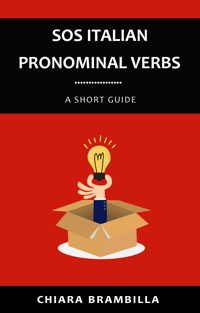
When learning Italian, one of the key aspects of becoming proficient in the language is understanding how to link ideas together smoothly. This is where Italian formal connectives come into play. These linking words, such as benché, bensì, ciò nonostante/ciononostante, fuorché and others, are essential for creating complex sentences and improving the fluidity of your writing and speech. They allow you to express contrast, cause and effect, addition, and other relationships between ideas.
In this article, I’ll explore some of the most common Italian formal connectives, how to use them correctly, and provide plenty of examples with translations into English.
What Are Formal Connectives?
Formal connectives (or conjunctions) are words that link clauses, sentences, or paragraphs to create cohesion in writing. In Italian, these connectives are often used in both spoken and written language, particularly in more formal contexts such as academic writing, business communication, and formal discussions. These words are used to show logical relationships such as opposition, condition, cause and effect, and addition.
Some of the most common Italian formal connectives include:
- Benchè (although, even though)
- Bensì (but rather)
- Ciò nonostante/ciononostenate (nevertheless, despite that)
- Tuttavia (however)
- Inoltre (moreover, furthermore)
- Perciò (therefore)
- Sebbene (although)
- Anche se (even if)
- Nonostante (despite)
- Fuorché (except)
Let’s take a closer look at each of these connectives with examples and their English translations.
1. Benchè (Although, Even Though)
Benchè is used to introduce a contrast or opposition between two ideas. It is often followed by a verb in the subjunctive mood.
- Example 1: Benchè fosse stanco, ha continuato a lavorare.
(Although he was tired, he continued working.) - Example 2: Benchè il progetto fosse complesso, siamo riusciti a completarlo in tempo.
(Even though the project was complex, we managed to complete it on time.)
2. Bensì (But Rather)
Bensì is used to introduce an alternative or correct an idea previously mentioned. It is typically used after a negative sentence.
- Example 1: Non è un medico, bensì un infermiere.
(He is not a doctor, but rather a nurse.) - Example 2: Non voglio criticarti, bensì aiutarti a migliorare.
(I don’t want to criticize you, but rather help you improve.)
3. Ciò Nonostante/Ciononostante (Nevertheless, Despite That)
Ciò nonostante/Ciononostante is used to express contrast, meaning “despite that” or “nevertheless.” It is often used to introduce a surprising or unexpected result in a sentence.
- Example 1: Ha studiato poco per l’esame, ciò nonostante ha ottenuto un buon voto.
(He studied little for the exam, nevertheless, he got a good grade.) - Example 2: La situazione era difficile, ciò nonostante abbiamo trovato una soluzione.
(The situation was difficult; despite that, we found a solution.)
4. Tuttavia (However)
Tuttavia is used to introduce a contrast, meaning “however.” It is often placed at the beginning of a sentence or after a comma.
- Example 1: Il film è stato interessante; tuttavia, è durato troppo a lungo.
(The movie was interesting; however, it lasted too long.) - Example 2: Mi piace il gelato al cioccolato, tuttavia non lo mangio spesso.
(I like chocolate ice cream, however, I don’t eat it often.)
5. Inoltre (Moreover, Furthermore)
Inoltre is used to add more information to the previous statement, similar to “moreover” or “furthermore.”
- Example 1: Abbiamo visitato il Colosseo. Inoltre, siamo andati al Foro Romano.
(We visited the Colosseum. Moreover, we went to the Roman Forum.) - Example 2: Il ristorante è ottimo, inoltre offre anche un servizio eccellente.
(The restaurant is great, furthermore, it offers excellent service.)
6. Perciò (Therefore)
Perciò is used to express a conclusion or result. It means “therefore” or “so.”
- Example 1: Non ho studiato abbastanza, perciò ho preso un brutto voto.
(I didn’t study enough, therefore I got a bad grade.) - Example 2: Non c’era abbastanza cibo, perciò siamo andati a comprare altro.
(There wasn’t enough food, so we went to buy more.)
7. Sebbene (Although)
Sebbene is another word that means “although” or “even though” and is used in more formal contexts. Like benchè, it is followed by the subjunctive mood.
- Example 1: Sebbene fosse tardi, siamo andati comunque a fare una passeggiata.
(Although it was late, we went for a walk anyway.) - Example 2: Sebbene la proposta fosse interessante, non è stata approvata.
(Although the proposal was interesting, it was not approved.)
8. Anche se (Even If)
Anche se means “even if” and is used to introduce a condition or hypothesis.
- Example 1: Anche se piove, usciamo lo stesso.
(Even if it rains, we’ll go out anyway.) - Example 2: Anche se non ho molta fame, mangio qualcosa.
(Even if I’m not very hungry, I’ll eat something.)
9. Nonostante (Despite)
Nonostante is used to express contrast or opposition, meaning “despite.”
- Example 1: Nonostante la stanchezza, ha continuato a lavorare.
(Despite being tired, he kept working.) - Example 2: Nonostante le difficoltà, siamo riusciti a finire il progetto.
(Despite the difficulties, we managed to finish the project.)
10. Fuorché (Except)
Fuorché is used to indicate an exclusion or exception, similar to “except” in English.
- Example 1: Non c’è nulla da fare, fuorché aspettare.
(There’s nothing to do, except wait.) - Example 2: Tutti sono venuti alla festa, fuorché Marco.
(Everyone came to the party, except Marco.)
Conclusion
Knowing Italian formal connectives is essential for achieving fluency, especially in writing and more formal speech. Understanding how to use words like benché, bensì, ciò nonostante, fuorché, and others will not only improve the flow of your sentences but also help you communicate more effectively in both spoken and written Italian.
If you found this article useful, don’t forget to share it with the world and to like our Facebook Page!
Credits:
Image by Copilot





 Mastering Informal Italian: Speak Like a Native
Mastering Informal Italian: Speak Like a Native

